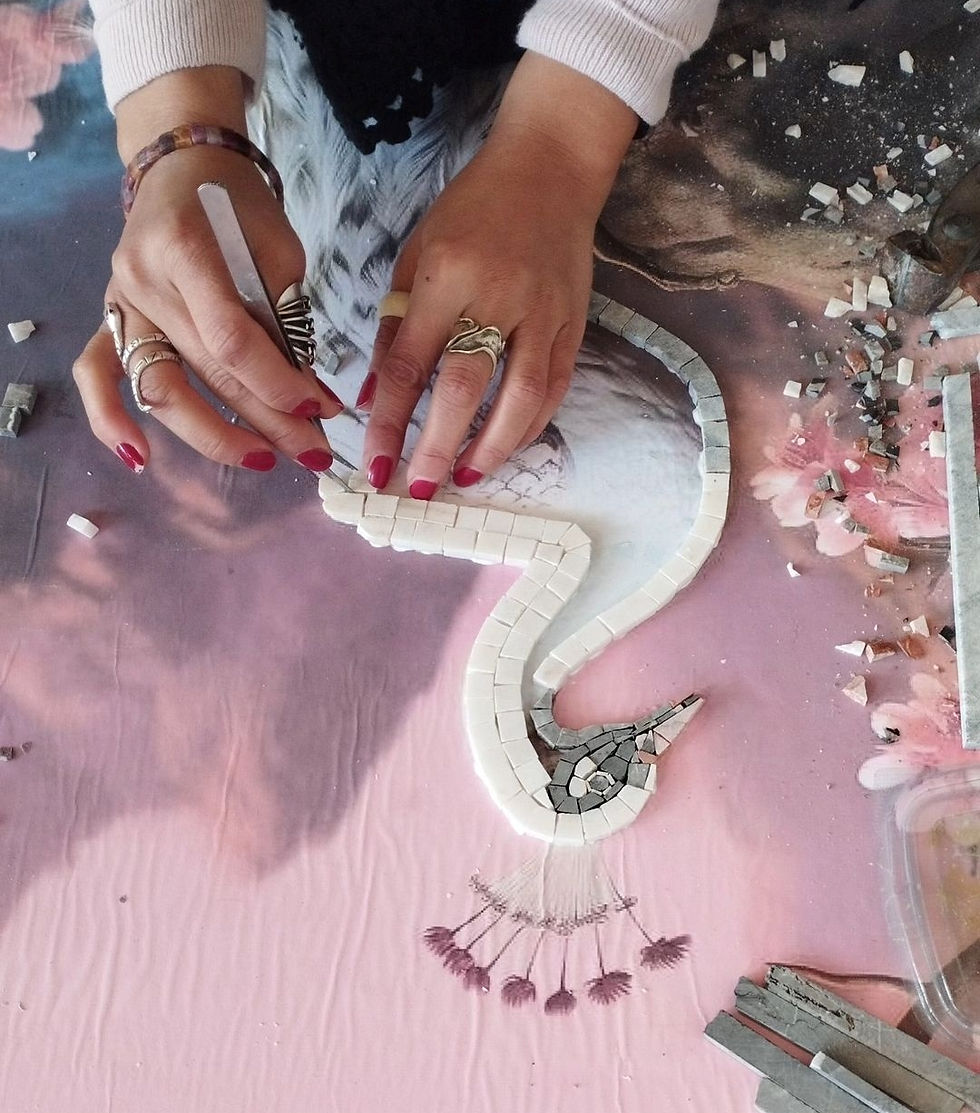WHAT IS MOSAIC ART?
- MH

- Jul 17
- 3 min read
Mosaic, derived from the Latin words “musivum opus”, is a floor, wall, ceiling covering that forms a pattern by combining materials with different properties. How mosaic art emerged is still not very clear today. In fact, the earliest examples are the surfaces of the palace walls of the ancient Sumerian city of Uruk (known as “Warka” in Arabic), which were formed with small terracotta conical pieces.
On surfaces dating to around 3100 BC, zigzags and rhombuses are formed, one after the other.

The colors of the conical terracottas are planned as red, white and black. This color difference is almost as if the surfaces made with the brick masonry technique were subsequently painted or the terracotta sherds were exposed to different degrees of firing.

In much of the classical literature on mosaics, pebbles seem to have been the basic material of the mosaic for a long time, if we put the Uruk mosaics in a slightly different place. The best examples of such mosaics are the mosaics of Tyrins, Gordion, Til-Barsip, Altintepe and Aslantaş. The pebble mosaic found in the Gordion Megaron II structure and exhibited today in the Gordion Museum is among the best known examples. When it was discovered by American archaeologists in 1952, the pavement, which dates to the mid-8th century BC, was highly regarded and even strongly emphasized that its date could not be earlier than the 5th century BC. Because until then, the pebble examples found at Olynthos had been introduced as the earliest known mosaics.However, the mosaics found in the ruins known as Gonurtepe in Turkmenistan should also be included in the known routine mosaic development chronology. Because these mosaics, dated to 2500-1500 BC, show quite different characteristics in terms of both technique and material.
The materials used include a repertoire of animal motifs such as humans, snakes, lions and rectangles made of small stones called tesserae and animal motifs such as humans, snakes, lions, etc., obtained from quite different materials such as limestone and ivory and made in the style called “opus sectile”.After a gap of a few centuries following the pebble mosaics of Gordion dating to the 8th century BC, we encounter the mosaics of Olynthos dating to the late 5th century BC. In these examples, human and animal motifs are used together.
The pebble mosaics from Olynthos show rectangular and circular motifs, and panels with central figures are not yet successful. The subjects are chosen from normal mythological subjects: Thetis bringing weapons to Achilles, Bellerophon killing Khimeira, the triumph of Dionysus, and real or fantastic mythological figures. The pebble mosaics at Pella are a century later than those at Olynthos in both technique and style. The ground is more pictorial, the picture areas are larger, the use of color is more careful and varied, and the human bodies are shaded and clothed. In some of the mosaics made here, different materials such as green beads and terracotta began to be used. Thus, where natural pebbles were no longer sufficient, cut stones called tessera began to be used.
This new fashion, which emerged in mosaic art in the 3rd century BC, gradually spread throughout the Hellenistic world.

Although mosaic art looks like a painting consisting of randomly arranged stones, the application of the arrangement of the stones according to a special technique shows that mosaic art is also made within the framework of a certain technique. The first step is to determine the exact boundaries of the area to be decorated with mosaics.
Then a layer of plaster is prepared to form the ground for the mosaics. At this point, mixing tar into the plaster prevents the mosaic structure from separating from the wall over time.The main materials of mosaic art consist of natural stones and glass. Although ceramic material is generally preferred in mosaic making, marble is mostly used in human face making. After the mosaic art gained importance over time, different techniques emerged in the way the stones were arranged and it was necessary to adjust the color tones and make smooth transitions between the stones.


Comments